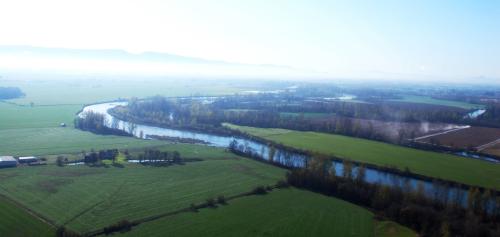
ARkStorm 2.0 Informs Dam Safety Planning
Long-lived hydropower infrastructure must be kept well-maintained and periodically modernized to ensure functionality and safety—particularly in the face of altered rainfall patterns and flood risk due to climate change. To inform emergency and safety planning in the state of California, a consortium of researchers funded by the Yuba Water Agency, California Department of Water Resources, and the National Science Foundation developed ARkStorm 2.0, which simulates possible 1000-year extreme storm and flood scenarios. Based on historic megastorm events in California, ARkStorm 2.0 also incorporates the effects of climate change and advanced climate and hydrological science to improve simulations of these possible weather events. The information in ARkStorm 2.0 about extreme storm and flood scenarios can help inform dam safety investments and emergency planning, to prepare for extreme weather events that can lead to spillway damage, downstream erosion, and even dam failure.
Learn more about ARkStorm 2.0.

